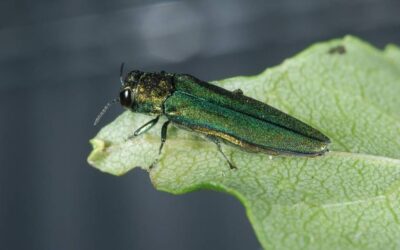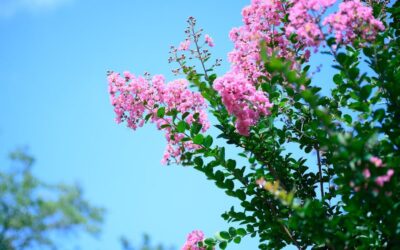Blog Topics
Did you know that some landscape pests survive over the winter months? A general supposition is that all insects are killed when the first frost arrives, but that is not true for all species; many just find a warmer place to hide. When spring arrives, these insect pests emerge ready to feast on your plants – as well as on you and your pets.
If you want to avoid problems with overwintering insect pests, keep reading to learn:
- which insect pests survive through the winter in northern Virginia,
- how they manage this feat of endurance,
- why overwintering insect pests may be a problem (both over the winter and next spring), and
- what you can do to prevent overwintering pest issues.
What Are Overwintering Pests?
Let’s begin with a simple definition. Overwintering pests are insect pests that find ways to hide from the harsh winter weather. While other pests may perish from exposure to the cold, overwintering pests find ways to preserve themselves through the coldest winter months.
There are a few different kinds of overwintering pests; some prefer to find a warm spot to spend the winter (often, this is in your home!) while others can survive outdoors in all but the most frigid temperatures. When these insects manage to endure through the winter, they can quickly overrun your home and landscape when they emerge the following spring.
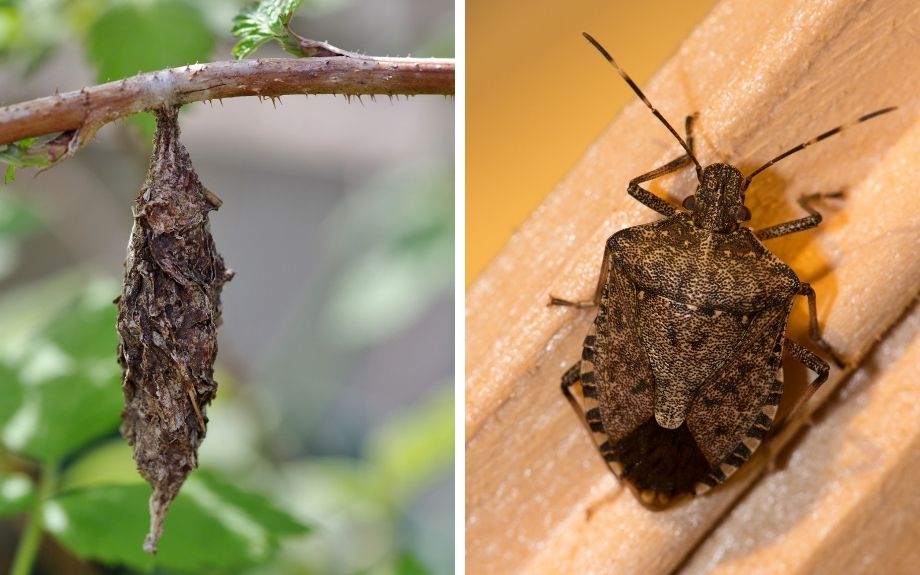
Left: Bagworms survive winter protected inside their characteristic bags. Right: The brown marmorated stink bug in a frequent, unwelcome guest inside homes during the winter.
Why Are Overwintering Pests a Problem?
There are several ways that overwintering pests can cause problems for you. One of the most significant issues is that these insects can enter your home and hide in warm places. During the winter, you may not notice that those pests are around since they seek secluded areas. However, once the weather turns warm again, you may find that your home is crawling with insects that you never knew were there.
Some of those insects, like the stink bug, can cause unpleasant odors. Others, like ladybugs, leave behind a sticky residue and other forms of waste. And even if an overwintering pest does not display one of those unpleasant qualities, they can still multiply to become a significant nuisance in your house.
The other main problem with overwintering pests is that they can cause extensive damage to your landscape plants [https://riverbendva.com/five-destructive-insect-pests-that-attack-trees-in-northern-virginia/] when they emerge in spring.
Warmer Winters Are Causing More Insect Pest Problems
As average temperatures rise, including during the winter, more types of insect pests are able to survive until spring. And populations of some pests that have traditionally overwintered in northern Virginia have exploded. For example, we’re seeing more deer ticks in the area than before, including an influx of Lyme-disease-carrying ticks into Loudoun County.
In general, insects are able to survive cold temperatures most easily when temperatures remain stable, without many freeze-thaw cycles. And without a deep freeze, more bugs survive the winter unscathed, ready to multiply, and hungry to feast on your landscape plants!
Which Pests Can Survive northern Virginia Winters
There are many varieties of overwintering pests, but some are more common than others. Different insects also spend winter in different stages of their lifecycle, from eggs to nymphs, larvae, or adults.
Here are a few of the pests that can survive the winter in northern Virginia as adults:
- Ambrosia beetles
- Aphids
- Boxelder bugs
- Emerald ash borer
- Cluster flies
- Kudzu bugs
- Ladybugs
- Stink bugs
- Mosquitoes
There are also a few common pests that overwinter during their egg or larval phases.
- Mealybugs overwinter as eggs
- Boxwood psyllids overwinter as eggs and/or nymphs under bud scales on boxwood plants
- Japanese beetles overwinter as grubs just a few inches underground
- Bagworm larvae spend the winter protected inside their characteristic bag
- Boxwood leaf miner larvae survive winter burrowed inside boxwood leaves
BE AWARE – Not all overwintering insects are landscape pests. For example, praying mantis egg cases are a common sight on plant stems in healthy, organic gardens that encourage beneficial insects.
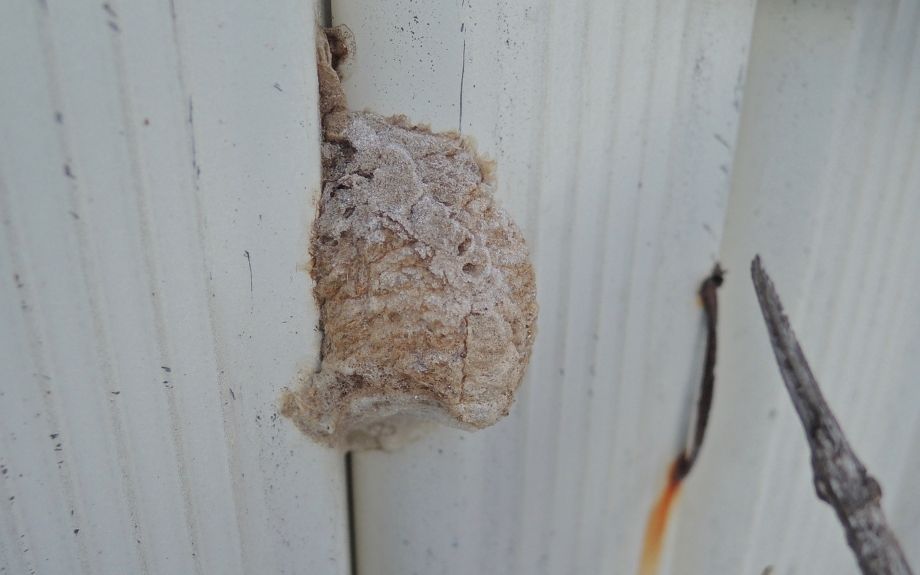
Praying mantis egg cases can be found mostly on plant stems, but they’ll also lay eggs on stationary objects like a fence.
Since pests are less mobile in their larval stage and egg cases or masses tend to blend in with their surroundings, it can be difficult to detect them. However, it’s important to notice when pests are overwintering in a non-adult stage of life. Once those pests mature and emerge in the spring, they’ll cause just as many issues as other overwintering pests.
Given these problems, it’s crucial to learn about these pests and how to prevent the damage they can cause. Knowing where and how overwintering pests might spend the winter months is an excellent place to start.
How Overwintering Insects Survive the Winter Months
It sometimes seems like there are almost as many winter survival tactics as there are overwintering insect species! But, in general, insects survive through winter’s cold weather in one of four ways:
- Hibernation – Like hibernating bears, some insects can go into a semi-dormant state over the winter, usually in a warm, sheltered spot. Unfortunately, that spot may be your house! Ladybugs, stink bugs, and boxelder bugs are common home, shed, and garage invaders in fall.
- Seeking shelter – Even the minimal shelter of tree cracks and bark, mulch, fallen leaves and plant debris, dead plant stems, and even under a blanket of fallen snow can be enough to keep an insect alive until spring. Others, like grubs, burrow into the soil in search of warmer temperatures.
- Spending winter in an immature state – Insect eggs, pupae (often called cocoons), and larvae are better able to survive winter’s cold than adults.
- Using “antifreeze” – Some insects are able to replace the water in their bodies with glycerol, an antifreeze-like substance that lets them withstand very cold temperatures.
Each of those tactics gives an overwintering pest the conditions it needs to survive the winter. They are also the first places you should check for overwintering pests when the season begins to change.
Preventing Overwintering Pest Problems
Dealing with overwintering pests is all about prevention. If an infestation has already occurred, it will be much more difficult to resolve it. Taking preemptive action by following the tips below will help you get a head start in dealing with overwintering pests.
Start Prevention Efforts Early
When to begin preventing overwintering pests depends on where you live. Some areas experience temperature drops much sooner than others, meaning that pests will begin to overwinter at different times.
Pests overwinter in response to the cold temperatures that arrive in fall and winter. So, you’ll need to pay attention to the seasonal changes in your area. For most of northern Virginia, the first frost of the year will usually occur sometime in November. At that time, the air will be cold enough to kill a pest that hasn’t yet found a protected location in which to overwinter.
However, your preparation should begin much sooner than the first expected frost date!
It’s best to begin your preparation before pests begin looking for a place to spend the winter. Late summer and early fall are the ideal times to prevent pests from overwintering on your plants or in your home.
Keep Pests Out of Your Home
It is always easier to prevent an overwintering pest infestation than to stop it once it begins. Start by inspecting your home and finding any cracks or crevices through which an overwintering pest could enter. If you find any entry points, seal them with caulk or another filler material.
You can also purchase insecticides that target overwintering pests specifically. Apply those insecticides in and around your home to deter any overwintering pests that might want to enter. Be sure to carefully read all labels before using these chemicals and never apply them where young children or pets could be exposed.
Scrape Off Egg Masses
One of the best ways to prevent a pest infestation next spring is to eliminate overwintering egg masses. Once those eggs hatch, you’ll have a pest problem that may be challenging to control.
Search your landscape areas, plants, and home for any signs of eggs left behind by these pests. Then do a thorough job of scraping away those eggs. Be sure to completely remove all the eggs you find (don’t just scrape them off and leave them on the ground!). Place them in a sealed plastic bag and dispose of it in the trash. Leaving even a few behind can allow the pests to survive.
Kill Pests with Horticultural/Dormant Oil Treatments
For plants that have an active pest infestation, or have had problems with pests in the past, an application of horticultural oil can often solve the problem. Horticultural oil, also called dormant oil, is applied when plants are dormant and temperatures are above freezing. The oil is harmless to the plant but will suffocate overwintering adult insects and desiccate eggs or larvae.
Because insects can be found on all parts of a plant, including the underside of leaves and on branches high in treetops, it’s best to have it applied by a professional. Local tree service companies, like Riverbend, have high-powered spray equipment to ensure all plant surfaces are fully covered with horticultural oil. Plus, because some plants cannot tolerate dormant oil, it’s important to have a professional who knows which plants not to treat.
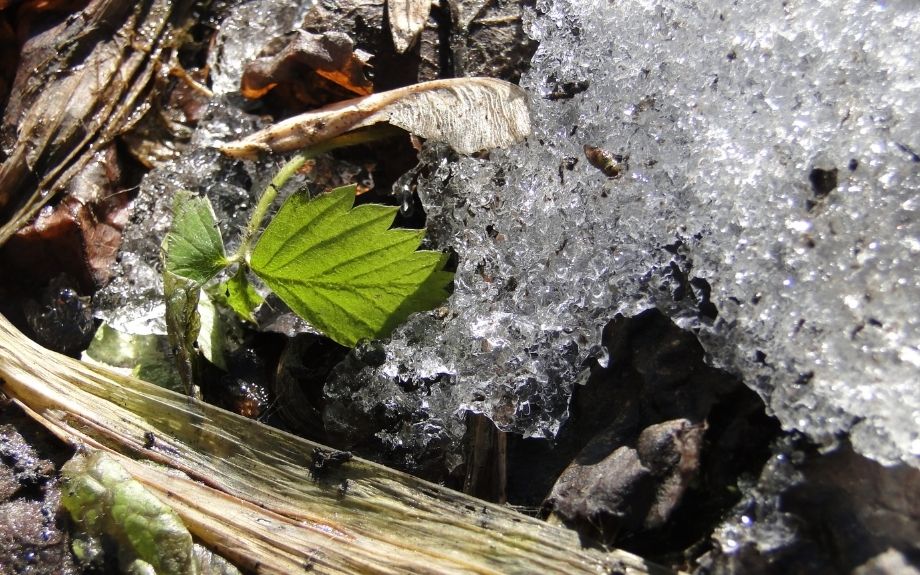
Garden debris, branches, and even snow can provide shelter for overwintering insect pests.
Remove Debris That Could Harbor Unwanted Pests
Overwintering pests often rely on fallen leaves and plant debris for their winter protection. So, while raking and general yard clean-up can be a chore, it is one that is well worth doing if you don’t want an infestation next spring. Not only will this keep your property looking orderly, but it will also reduce the odds that overwintering pests will survive in your garden.
IMPORTANT – A thorough fall yard cleanup is a good idea if you’ve experienced significant pest problems that year. However, it will also remove the winter habitat needed by beneficial insects. Without a generation of beneficials ready to emerge in spring, you’ll have to wait longer to see their positive impact on exploding pest populations.
Schedule Regular Landscape Pest Prevention
Hiring a professional landscape maintenance company is another effective way to prevent overwintering pest infestations. These tree and landscape professionals can quickly find and treat any insect pests that may be a problem. You may also gain some key insights into how you can ensure overwintering pests are not a problem in the future.
Need Help With Overwintering Pest Prevention?
If you want to learn more about how to prevent overwintering pest infestations in your landscape, contact Riverbend Landscapes & Tree Service. Our landscape maintenance services include effective treatments and preventive measures to keep harmful insect pests at bay. Preventing and managing overwintering pests is just one of the ways we can help keep your property healthy and beautiful.
Give Us a Call at 703-402-9366
If you'd like help with your trees or landscape, have any questions, or would like to schedule an appointment with one of our Certified Arborists, please give us a call. We'd love to hear from you!

